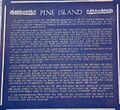Pine Island
Details
The mighty Saskatchewan was the principal river route of the fur trade in western Canada. It became the North West Passage-Not to the orient but to riches far more vast. By 1785 aggressive, fiercely competitive traders played leap-frog in their establishment of forts along the North Saskatchewan.
On Pine Island, so beautifully visible from this view, five rival fur traders competed for furs and supplies. An independent trader, Donald McKay, built a fort near the middle of the island in 1786. Peter Pangman built a large Fort Pine island house at the lower end of the island. It became the trading post of the North West Company. That same year, The Hudson's Bay Company built "Manchester House" at the upper end of the island. Champagne, another independent trader established himself on the island for the 1786 - 1787 trading season. From 1786 to 1793, Pine Island posts traded with the Cree to the north and the Sioux, Blackfeet and Gros Ventres to the south.
The first york boat used on the Saskatachewan was built at Manchester House in 1788 to carry pemmican and furs down to Cumberland House.
In 1793 a group of Gros Ventres attacked the island forts. The Indians were repelled from Pine Island House but were successful in driving the men from Manchester House. The North West Company abandoned Pine Island House the following spring. The Indians burned the forts within the year.
David Thompson, Alexander Henry and other great men traveled this waterway and stayed or rested on Pipe Island. Their canoes were powered by the young and colorful voyageurs.
In 1885, during the North West Rebellion, a detachment of N.W.M.P. commanded by Inspector Dickens, a son of the novelist, spent the nights of April 19th and 20th thus resting a day on Pine Island after leaving Fort Pitt on their way to Fort Battleford. Also that year the steamboat, North West, while carrying Middleton's troop to Fort Pitt in pursuit of Big Bear, pulled into Pine Island for wood. To clear the decks for the wood, the crew dumped the weapons earlier surrendered by Poundmaker's warriors into the river beside the island.
From 1785 to 1793 Pine Island was the most westward and busy center of civilization. Pine Island looked to the fur trader as it appears to the present day visitor. The island is covered with spruce (Pine to the traders), Black Poplar, Cranberry and Willow.
In 1966 archaeological field work was done on the island forts. The mouth of the Big Gully Creek area and Pine Island are protected and preserved in memory of our historical and national heritage.
Location
| Land Location | NW S07 T49 R21 W3M |
| Rural Municipality | 470 - Paynton |
| GPS Location | 53° 12' 56.77" N, 109° 4' 13.91" W |
